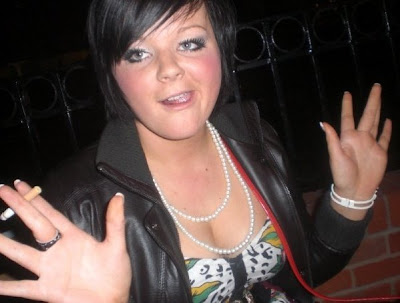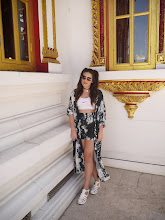
After analysing other magazine contents pages, I decided to follow a rather simple, yet effective layout such as NME's. Although Vogue's contents page looks proffesional, the layout used is more recognisable with a fashion magazine and I personally felt more drawn to and inspired with NME's layout.
I decided to include a banner across the top of the page making it clear that it is the contents page for that actual issue. It is the first thing that will attract the reader so it will have to be large and striking.
I am also going to use a picture taking up the middle half of the page. This will correspond with the main artist on the front and also be eye-catching. Rather than being over whelmed with a block of writing, a picture helps excite the page and also gives the reader a visual to help them get to the correct page they want to go to. Beneath the picture I will have a small bit of text, reflecting the picture just to give a quick bite of information for the reader to engage in. Beneath that paragragh of text, I will have another little bit of text and perhaps a picture advertising or possibly promoting something else within the magazine. This will also stop the risk of having excesses of writing.
Along the right hand side of the contents page, I will have a column and that will be where the reader can directly access the exact page numbers of the page they desire to turn to. Having the contents in a comlumn layout is a typical convention of a magazine and is an easy and typical layout to follow.
.JPG)
After planning the rough layout of my contents page I started to peice it together. In the banner across the front of the page I decided to use a bold font in black saying 'THIS WEEK' with the month beneath it. This allows the to reader clearly identify the purpose of this page. I used
purple as it is an attractive colour, but won't distract the reader's attention from the actual image. 'January 2009' is in white as it predominantly stands out across the dark black and
purple background. Throughout the magazine I will continue to use the same fonts as this is a known convention of other magazines on todays market and once again, I didn't feel I could challenge this as it works so well. I also think it gives a sleek look to the magazine and brings it together.
The image I used clearly corresponds with that of the front cover. It includes the lead artist featured on the cover but also a band member. As the artist is featured as part of a band, it is important to make it recognisable to the reader that other members are included. The image mirrors the size of the text below so there is a sense of balance on the page and so it doesn't appear to be too busy or to have too much text. There is a clear, large heading introducing the image and the text. The language used in the text is that of a conversational tone which appeals to my target audience. I will include a light overview of a night out with the band and will follow the 'what, where, who and when' gossip style writing of todays media.
At the bottom of the page there is a small black box with a 'subscribe today' offer. I found this to be a typical convention of a magazine and it encourages readers to purchase more issues of this magazine despite the fact they have not yet read this copy. I decided to use orange for the colour of the font as it is a complimentary colour with the
purple used in the banner. I also included a small image of the actual front cover of the magazine as this also is a typical convention of a magazine.
The column along the left hand side is filled with page numbers with the appropriate text to lead the reader to what they are looking for. I have split the text into small sub-headings as this makes it easy to follow and it doesn't look messy or complicated. It was also a convention I noticed in the contents pages of Vogue and NME. Although they are both different genres of magazines, they both include this style in their contents pages which suggests to me it would be a convention to follow when completing mine rather than challenging it.

Although I was happy with the main layout of my magazine's contents page, I decided it still needed a few changes to make it more effective. The first thing I did was play around with the colour in the masthead. I decided to go with
red as I found the font in black didn't stand out as much as the white did and looked rather dull. The
red colour also corresponds with the red colour scheme I used on the front cover and links the contents page with the front cover and makes it look like a genuine issue of a magazine.
I was happy with the text below the image but decided to change the image itself. The image includes the two models from the other picture but also including a third band member. This makes it easier for an audience to accept them as a band. Also the way the models are posing indicates they are having fun which reflects the title of 'Our wild night with...'.
I was still happy with the subscription box at the bottom of the page but thought it was necessary to also change the colour of the actual font as I also felt it didn't stand out as much as it could of. Rather than using the less attractive
orange, I replaced it with an eye-catching
yellow. Not only does this stand out more on a black background, it also fits with the colour scheme on my front cover of
red and
yellow. I decided to leave the small image in the right hand corner of the box as I still felt this looked good and made it very clear what the offer was about.
I left the format of the column running down the right hand side of the page the same as I was still happy with that layout and continue to believe that is the simplest way for a reader to find the page they desire to turn to. I added a few more headings since my last draft and included a small image of another band. This is another visual aid for the reader to quickly identify what else will be included in the magazine.
Beneath the image I added a little arrow which prompts the reader to turn the page and reveals more about what's in the magazine without adding more writing to a long list. It looks more appealing at a first glance.
I think my contents page is successful and accurately reflects what a contents page of a music magazine should look like.



















.bmp)

